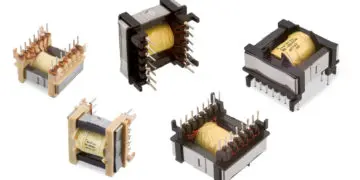Bourns Unveils Automotive 150°C Semi-shielded Power Inductors
Bourns launches automotive grade semi-shielded power inductor series featuring high operating temperatures up to 150°C. Bourns AEC-Q200 model SRN8040HA series is constructed using the company’s advanced magnetic silicon-based coating technology that Read the original post Bourns Unveils Automotive 150°C Semi-shielded Power Inductors on Passive Components Blog.

























